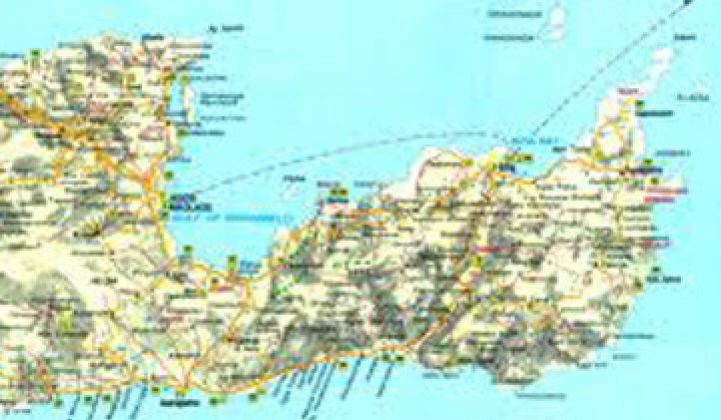BrightSource Energy will build a 38-megawatt solar thermal plant on the island of Crete in conjunction with Nur-Moh, a developer. Nur Energie, a power provider, has licensed BrightSource's technology and is one of the two European backers of Nur-Moh.
It's a bit of good news for a company that has had to deal with some headaches lately. BrightSource last year obtained approval from the federal government and state of California to build a 370-megawatt plant in Ivanpah, California. It even got a loan guarantee and obtained $300 million more for NRG.
Unfortunately, it has taken quite a while for the project to get off the ground. In the meantime, the cost of power plants built with solar panels have come down rapidly. Solar panel plants now likely cost less per megawatt than solar thermal plants, a reversal from the situation just a few years ago. BrightSource argues that the solar thermal plants are still economical, and can provide baseline-quality power more effectively than parks made from PV panels. Nonetheless, others argue that even the efficient solar thermal players like BrightSource will struggle in the coming years. (See our recent report on the subject here.)
Solar panel power plants can also be scaled up and down in size fairly easily, which can make permitting earlier. Competitor Stirling Energy Systems, which tried to build solar thermal plants but with a much different technology, recently combusted.
BrightSource, by contrast, has had to fend off several objections and lawsuits from environmentalists, like a recent one from the Western Watersheds Project.
The small size of the Crete project -- about one-tenth of the size of Ivanpah -- possibly indicates that BrightSource might be looking at ways to build smaller solar parks.
The Crete project will take advantage of air cooling to convert steam back into water. (In the power plant, mirrors focus solar heat on a water tank. The resulting steam is used to turn a turbine, but then it turns back into water to begin the process over). This will reduce water consumption by 95 percent.
Located between Europe and Africa, the Greek island is fairly warm and dry most of the year although parts also receive snow. Tourism, drinking coffee, blaming the U.S. for everything, and issuing traffic tickets form the bulk of the economy.



